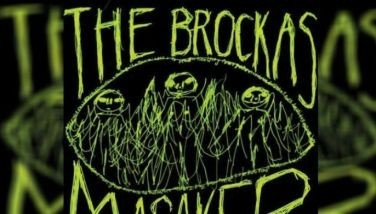Da Vinci’s same-sex secrets
If Leonardo da Vinci was the most amazing genius the world has ever known as we had written about earlier in Live Feed, he was also a simple normal human being in show business hounded by rumors of homosexuality all his life. Da Vinci kept his private life secret even as he became the subject of satire, analysis and speculation in the mid-16th century, revived in the 19th and 20th centuries, most notably by Sigmund Freud.
In 1910, Freud wrote a novelette with a psycho-analytical twist on Da Vinci, utilizing his childhood based on one of his many notebooks. Da Vinci had written: “As I was in my cradle, a vulture came down to me, opened my mouth with its tails, and struck me many times with its tail.†Vulture being a symbol for mother in ancient Egypt, Freud speculated that since Da Vinci was born illegitimate, his over-protective mother subjected him to too much femininity that set the stage for his homosexuality. This theory seems rather far-fetched, although Freud admitted to its mainly being an artistic interpretation.
When Da Vinci was 15, his uncle introduced him to become apprentice to the artist Andrea del Verrocchio. For six years, he learned the wide breadth of technical skills, including metalworking, leather arts, carpentry, drawing, sculpting and painting. By the age of 20, he had qualified as a master artist in the Guild of Saint Luke and established his own workshop. In 1476, just as Da Vinci was becoming a master in his own right, a possible partner to Verrocchio, he was suddenly plagued by scandal.
Court records of 1476, when he was 24, show that Da Vinci and three others were charged with sodomy involving Jacopo Saltarelli, a notorious male prostitute. The charges were dismissed for lack of evidence. But the incident had a significant effect on Da Vinci’s life and ambition. He moved away from Florence and went to Milan to seek his new fortune.
In 1482, Lorenzo de’ Medici commissioned Da Vinci to create a silver lyre to bring to Ludovico il Moro, the Duke of Milan. Da Vinci did just that, but apart from this, included his own letter detailing how his engineering and artistic talents would be of great service to Ludovico’s court. His letter successfully got him into the good graces of Ludovico until 1499, during which time he worked on many projects including The Last Supper.
Da Vinci’s most intimate relationships were perhaps with his pupils Salai and Melzi. Gian Giacomo Caprotti, known as Salai, was the most accessible and written about. Count Francesco Melzi, known as Da Vinci’s favorite who stayed with him until his death, had described Da Vinci’s feelings for his pupils as both loving and passionate. Because he had never married, nor harbored any interest in women, much has been written about his presumed homosexuality and its role in his art, particularly in the androgyny and eroticism manifested in the John the Baptist andBacchus paintings. Salai, the young man with long auburn curls who worked with Da Vinci for 20 years, is thought to have modeled for these paintings in 1514.
As apprentice and possible lover of Da Vinci, Salai was the model for the Mona Lisa painting, said Italian researcher Silvano Vinceti. The painting, now on display at the Louvre Museum in Paris, according to Vinceti, is filled with hidden symbolic meanings. He also noted similarities of Salai with the mouth and nose of Mona Lisa. Salai worked for more than two decades starting in 1490 as a favorite model for Da Vinci.
Mona Lisa is most famous painting in the world, privately commissioned, completed between 1505 and 1507, forever a work in progress, as it was Da Vinci’s attempt at perfection. The painting was never delivered to its commissioner. Da Vinci kept it with him until the end of his life.
On October 1515, King Francis I of France commissioned Da Vinci to make a mechanical lion which could walk forward, then open its chest to reveal a cluster of lilies. For this, he was housed in the manor house in the King’s compound, together with the Count Francesco Melzi. On May 2, 1519, King Francis who had become a close friend, held Da Vinci’s head in his arms as he died. In accordance with his will, Melzi was the principal heir and executor, receiving money, paintings, tools, library and personal effects. Salai and his servant Battista di Vilussis each received half of Da Vinci’s vineyards; his brothers received land; and his serving woman received a black cloak with a fur edge. The great Leonardo da Vinci was buried in the Chapel of Saint-Hubert in Château d’Amboise, in France.
Da Vinci - The Genius continues at The Mind Museum in Taguig until Nov 30.
(E-mail your comments to [email protected].)
- Latest
- Trending





























